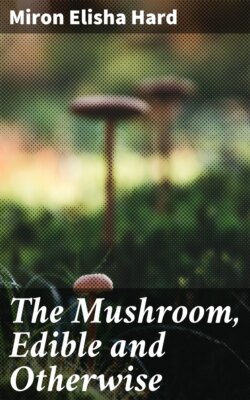Читать книгу The Mushroom, Edible and Otherwise - Miron Elisha Hard - Страница 27
На сайте Литреса книга снята с продажи.
ОглавлениеFigure 17.—Amanita solitaria. Two-thirds natural size, showing the peculiar veil.
Figure 18.—Amanita solitaria. Two-thirds natural size, showing scaly cap and stem.
Plate II. Figure 19.—Amanita solitaria.
Natural size, showing scaly cap and stem, plant white.
Solitary, growing alone. I have found this plant in various parts of the state and have always found them growing alone. In Poke Hollow, where I found the specimens in the illustrations, I found several on the hillside on different occasions, but I have never found them growing in groups. It is quite large in size, white or whitish, very woolly or floccose. Usually the cap, stem, and the gills are covered with a floccose substance which will serve to identify the species. This fluffy exterior adheres readily to your hands or clothing. The cap is sometimes tinged with brown, but the flesh is white and smells quite strong, not unlike chloride of lime. The annulus is frequently torn from the stem and is found adhering to the margin of the cap.
The pileus is from three to five inches broad, or more, when fully expanded, at first globose to hemispherical, as will be seen in Figures 17 and 18, convex, or plane, warty, white or whitish, the pointed scales being easily rubbed off, or washed off by heavy rains, these scales varying in size from small granules to quite large conical flakes, and differing in condition and color in different plants.
The gills are free, or are not attached by the upper part, the edges are frequently floccose where they are torn from the slight connection with the[Pg 30]
[Pg 31] upper surface of the veil; white, or slightly tinged with cream-color, broad.
The stem is four to eight inches high, solid, becoming stuffed when old, bulbous, rooting deep in the soil, very scaly, ventricose sometimes in young plants, white, very mealy. Volva friable. Ring, large, lacerated, usually hanging to the margin of the cap, but in Figure 19 it adheres to the stem.
This is a large and beautiful plant in the woods, and easily identified because of its floccose nature and the large bulb at the base of the stem. It is not so warty and the odor is not nearly so strong as the Amanita strobiliformis. It is edible but very great caution should be used to be sure of your species. Found from July to October in woods and roadsides.
